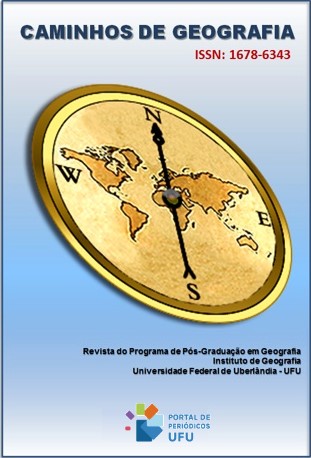ASSESSMENT OF SOIL CO2 EMISSIONS IN CAATINGA ENVIRONMENTS, IN ALAGOAS, BRAZIL
DOI:
https://doi.org/10.14393/RCG249466079Keywords:
Carbon dioxide, Dry vegetation, Respirometry method, Edaphic properties, Climate VariabilityAbstract
The CO2 measured from the soil is the microbial activity provided by several biogeochemical processes and its investigation can answer about the factors associated with the environmental condition in the Caatinga. Thus, the aim of this study was to assess the soil CO2 emissions in two Caatinga environments, comparing them with the environmental conditions of the soil and climate, in the Alagoas' Semiarid. Microbial activity was evaluated through the CO2 released from the soil, which was soaked up with a KOH solution. A rain gauge was installed to obtain precipitation data, in addition to soil temperature measurements at 10 cm from the surface. The water content, carbon content and soil organic matter were evaluated. The highest emission of CO2 from the soil in the two evaluated areas occurred at night, due to the milder soil temperature; The release of CO2 was variable, due to the properties of the soil, climate and vegetation; Soil carbon and organic matter showed high values in the Caatinga areas, demonstrating great biogeochemical and nutrient cycling activity; It is recommended that future studies on CO2 kinetics be carried out, in order to compare values and better understand the dynamics of this environment.
Downloads
Downloads
Published
How to Cite
Issue
Section
License
Copyright (c) 2023 Geovânia Ricardo dos Santos, Kallianna Dantas Araujo, Mayara Andrade Souza, Sinval Autran Mendes Guimarães Júnior

This work is licensed under a Creative Commons Attribution-NonCommercial-NoDerivatives 4.0 International License.
Autores que publicam nesta revista concordam com os seguintes termos: a) Autores mantém os direitos autorais e concedem à revista o direito de primeira publicação, com o trabalho licenciado sob a Creative Commons Atribuição-NãoComercial-SemDerivações 4.0 Internacional. b) Autores têm permissão e são estimulados a publicar e distribuir seu trabalho online (ex.: em repositórios institucionais ou na sua página pessoal), já que isso pode gerar alterações produtivas, bem como aumentar o impacto e a citação do trabalho publicado. c) Em virtude de aparecerem nesta revista de acesso público, os artigos são de uso gratuito, com atribuições próprias, em aplicações educacionais e não-comerciais.











